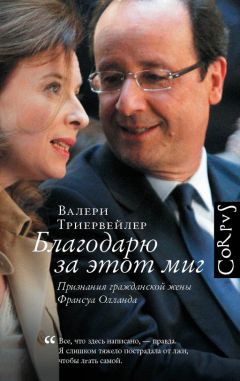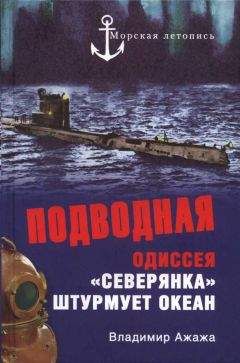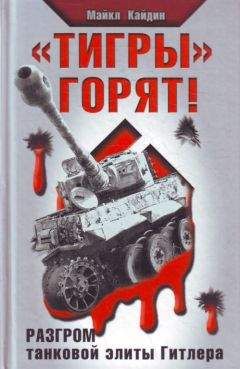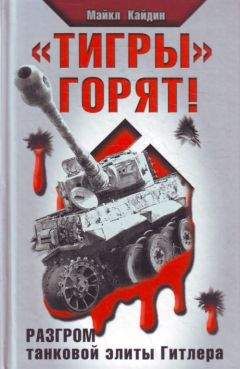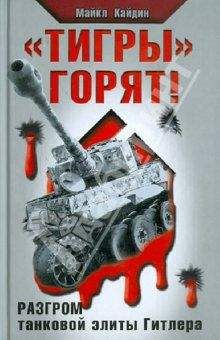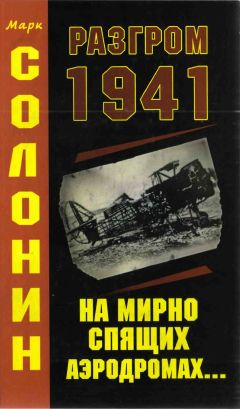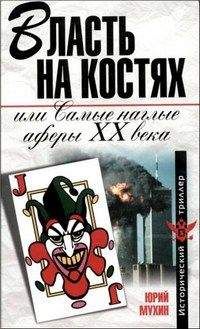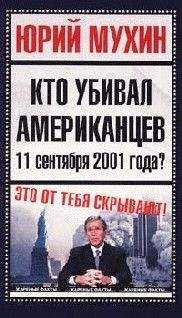Тьерри Мейссан - 11 сентября 2001
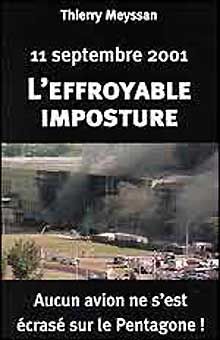
Скачивание начинается... Если скачивание не началось автоматически, пожалуйста нажмите на эту ссылку.
Жалоба
Напишите нам, и мы в срочном порядке примем меры.
Описание книги "11 сентября 2001"
Описание и краткое содержание "11 сентября 2001" читать бесплатно онлайн.
Эта книга произвела фурор и мгновенно стала бестселлером во Франции, а затем и в других европейских странах. В США власти более года препятствовали выходу в свет этой книги, но она все же была опубликована – и сразу стала мощнейшим подспорьем для антивоенного и «антиглобалистского» движения. То, что книга Мейссана не только не стала бестселлером у нас в стране, а, напротив, была фактически замолчана, – явление позорное, говорящее о продажном, марионеточном, характере политической науки в России.
Buildings are designed to withstand loading events that are deemed credible hazards and to protect the public safety in the event such credible hazards are experienced. Buildings are not designed to withstand any event that could ever conceivably occur, and any building can collapse if subjected to a sufficiently extreme loading event. Communities adopt building codes to help building designers and regulators determine those loading events that should be considered as credible hazards in the design process. These building codes are developed by the design and regulatory communities themselves, through a voluntary committee consensus process. Prior to September 11, 2001, it was the consensus of these communities that aircraft impact was not a sufficiently credible hazard to warrant routine consideration in the design of buildings and, therefore, the building codes did not require that such events be considered in building design. Nevertheless, the design of WTC 1 and WTC 2 did include at least some consideration of the probable response of the buildings to an aircraft impact, albeit a somewhat smaller and slower moving aircraft than those actually involved in the September 11 events. Building codes do consider fire as a credible hazard and include extensive requirements to control the spread of fire throughout buildings, to delay the onset of fire-induced structural collapse, and to facilitate the safe egress of building occupants in a fire event. For fire-protected steel-frame buildings, like WTC 1 and WTC 2, these code requirements had been deemed effective and, in fact, prior to September 11, there was no record of the fire-induced-collapse of such structures, despite some very large uncontrolled fires.
The ability of the two towers to withstand aircraft impacts without immediate collapse was a direct function of their design and construction characteristics, as was the vulnerability of the two towers to collapse a result of the combined effects of the impacts and ensuing fires. Many buildings with other design and construction characteristics would have been more vulnerable to collapse in these events than the two towers, and few may have been less vulnerable. It was not the purpose of this study to assess the code conformance of the building design and construction, or to judge the adequacy of these features. However, during the course of this study, the structural and fire protection features of the buildings were examined. The study did not reveal any specific structural features that would be regarded as substandard, and, in fact, many structural and fire protection features of the design and construction were found to be superior to the minimum code requirements.
Several building design features have been identified as key to the buildings' ability to remain standing as long as they did and to allow the evacuation of most building occupants. These included the following:
• robustness and redundancy of the steel framing system
• adequate egress stairways that were well marked and lighted
• conscientious implementation of emergency exiting training programs for building tenants Similarly, several design features have been identified that may have played a role in allowing the buildings to collapse in the manner that they did and in the inability of victims at and above the impact floors to safely exit. These features should not be regarded either as design deficiencies or as features that should be prohibited in future building codes. Rather, these are features that should be subjected to more detailed evaluation, in order to understand their contribution to the performance of these buildings and how they may perform in other buildings. These include the following:
• the type of steel floor truss system present in these buildings and their structural robustness and redundancy when compared to other structural systems
• use of impact-resistant enclosures around egress paths
• resistance of passive fire protection to blasts and impacts in buildings designed to provide resistance to such hazards
• grouping emergency egress stairways in the central building core, as opposed to dispersing them throughout the structure
During the course of this study, the question of whether building codes should be changed in some way to make future buildings more resistant to such attacks was frequently explored. Depending on the size of the aircraft, it may not be technically feasible to develop design provisions that would enable all structures to be designed and constructed to resist the effects of impacts by rapidly moving aircraft, and the ensuing fires, without collapse. In addition, the cost of constructing such structures might be so large as to make this type of design intent practically infeasible.
Although the attacks on the World Trade Center are a reason to question design philosophies, the BPS Team believes there are insufficient data to determine whether there is a reasonable threat of attacks on specific buildings to recommend inclusion of such requirements in building codes. Some believe the likelihood of such attacks on any specific building is deemed sufficiently low to not be considered at all. However, individual building developers may wish to consider design provisions for improving redundancy and robustness for such unforeseen events, particularly for structures that, by nature of their design or occupancy, may be especially susceptible to such incidents. Although some conceptual changes to the building codes that could make buildings more resistant to fire or impact damage or more conducive to occupant egress were identified in the course of this study, the BPS Team felt that extensive technical, policy, and economic study of these concepts should be performed before any specific code change recommendations are developed. This report specifically recommends such additional studies. Future building code revisions may be considered after the technical details of the collapses and other building responses to damage are better understood.
2.4 Recommendations
The scope of this study was not intended to include in-depth analysis of many issues that should be explored before final conclusions are reached. Additional studies of the performance of WTC 1 and WTC 2 during the events of September 11, 2001, and of related building performance issues should be conducted. These include the following:
• During the course of this study, it was not possible to determine the condition of the interior structure of the two towers, after aircraft impact and before collapse. Detailed modeling of the aircraft impacts into the buildings should be conducted in order to provide understanding of the probable damage state immediately following the impacts.
• Preliminary studies of the growth and heat flux produced by the fires were conducted. Although these studies provided useful insight into the buildings' behavior, they were not of sufficient detail to permit an understanding of the probable distribution of temperatures in the buildings at various stages of the event and the resulting stress state of the structures as the fires progressed. Detailed modeling of the fires should be conducted and combined with structural modeling to develop specific failure modes likely to have occurred.
• The floor framing system for the two towers was complex and substantially more redundant than typical bar joist floor systems. Detailed modeling of these floor systems and their connections should be conducted to understand the effects of localized overloads and failures to determine ultimate failure modes. Other types of common building framing should also be examined for these effects.
• The fire-performance of steel trusses with spray-applied fire protection, and with end restraint conditions similar to those present in the two towers, is not well understood, but is likely critical to the building collapse. Studies of the fire-performance of this structural system should be conducted.
• Observation of the debris generated by the collapse of the towers and of damaged adjacent structures suggests that spray-applied fire proofing may be vulnerable to mechanical damage from blasts and impacts. This vulnerability is not well understood. Tests of these materials should be conducted to understand how well they withstand such mechanical damage and to determine whether it is appropriate and feasible to improve their resistance to such damage.
• In the past, tall buildings have occasionally been damaged, typically by earthquakes, and experienced collapse within the damaged zones. Those structures were able to arrest collapse before they progressed to a state of total collapse. The two WTC towers were able to arrest collapse from the impact damage, but not from the resulting fires when combined with the impact effects of the aircraft attacks. Studies should be conducted to determine, given the great size and weight of the two towers, whether there are feasible design and construction features that would permit such buildings to arrest or limit a collapse, once it began.
2.5 References
BBC News. 2001. «We Ran for Our Lives.» Account of Mike Shillaker. September 13.
Cauchon, D. 2001a. «For Many on Sept. 11, Survival Was No Accident,» USA Today.com. December 19. Cauchon, D. 2001b. «Four Survived by Ignoring Words of Advice,» USA Today.com. December 19. Computers and Structures, Inc. (CSI). 2000. SAP-2000. Berkeley, CA. Dateline NBC. 2001. «The Miracle of Ladder Company 6.» September 28. Hearst, D. 2001. «Attack on America: Survivors: Suddenly they started to yell out, `get out now': Bravery and fear mingled with disbelief,» Guardian Home Pages, page 15. Account of Simon Oliver. September 13.
Labriola, J. 2001. Personal account. Channel 4 News, «Inside the World Trade Center,» broadcast. September 13.
Masetti, A. 2001. Personal account received by email. December 21. Mayblum, A. 2001. Personal account. www.worldtradecenternews.org/survivorstory.html, World Trade Center Miracles section. September 18.
New York Board of Fire Underwriters. 1975. One World Trade Center Fire, February 13, 1975. Nicholson, W. J.; Rohl, A. N.; Wesiman, I.; and Seltkoff, I.J. 1980. Environmental Asbestos Concentrations in the United States, page 823. Environmental Sciences Laboratory, Mount Zion Hospital, New York, NY.
Scripps, H. 2001. «I walked out… I made it out alive,» Boston Herald.com. Account of John Walsh. September 14.
Shark, G., and McIntyre, S. December 5, 2001. ABS. Personal account. Smith, D. 2002. Report from Ground Zero. Viking Penguin, New York. p. 29. Zalosh, R. G. 1995. «Explosion Protection,» SFPE Handbook of Fire Protection Engineering, 2nd edition. Quincy, MA.
Isn't it comforting that a supposedly scientific article about the collapse of the WTC (apart from articles on the 1975 WTC fire) only quotes survival stories from media sources?
The author of the comments (italic) is unknown. This is one of many pages, mostly concerning 9/11, which appeared anonymously during 2002-2003 at nerdcities.com/guardian/. The website disappeared in April 2003, but is preserved at http://thewebfairy.com/nerdcities/.
Комментарии и гиперссылки
1
Это коммюнике было взято с сервера Министерства обороны США. С ним можно ознакомиться на сайте архивов Йельского университета:
• http://www.yale.edu/lawweb/avalon/sept_11
2
Part of Pentagon Collapse after Terrorists Crash Plane into Building – депеша Associated Press от 11 сентября 2001 г.
3
The Day the World Changed in The Christian Science Monitor от 17 сентября 2001 г.;
• http://www.csmonitor.com/
4
Inside the Pentagon Minutes Before Raid Рика Пирсона (Rick Pearson), in Chicago Tribune от 12 сентября 2001 г.;
• http://www.chicagotribune.com/
5
DodNews Briefing от 12 сентября 2001 г., 15 часов 25 минут.
6
Special Edition, Christian Science Monitor от 17 сентября 2001 г.; можно скачать с сайта:
• http://www.csmonitor.com/pdf/csm20010917.pdf
7
Доступно на: http://www.senate.gov/~armed_services
8
Доступно на: http://www.peterson.af.mil/norad/presrelNORADTimelines.htm
См. также: Military Alerted Before Attacks Брадли Грэма (Bradley Graham) в The Washington Post от 15 сентября 2001 г.;
• http://www.washingtonpost.com
US Jets Were Just Eight Minutes Away from Shooting Down Hijacked Plane Андрю Гам-бела (Andrew Gumbel) в The Independent от 20 сентября 2001 г.;
• http://news.independent.co.uk
9
Ср. Public Report of the White House Security Review (10 мая 1995 г.);
• http://www. fas. org/irp/agency/ustreas/usss/tlpubrpt. html
10
Официальный сайт базы Эндрюс:
• http:/www. dcmilitary. com/baseguides/airforce/andrews
11
В Newsday от 23 сентября 2001 г.
12
В соответствии с информацией, полученной от конструктора;
• http://www.boeing.%20com/commercial/757-200/product.html
13
Виртуальное посещение Пентагона на сайте:
• http://www. defenselink. mil/pubs/pentagon
14
Фотография принадлежит: DoD, Tech. Sgt. Cedric H. Rudisill
• www.defenselink.mil/photos/Sep2001/010914-F-8006R-002.html
15
Inside the Ring, хроника Билла Герца (Bill Gertz) в Washington Times от 21 сентября 2001 г.;
• http://www. washtimes. com
16
Пресс-конференция под председательством Виктории Кларк, заместителя министра обороны, Пентагон, 12 сентября 2001 г.;
• www.defenselink.mil/news/Sep2001/t09122001^912asd.html
17
Nation s Capital Under State of Emergency, CNN от 12 сентября 2001 г.;
• http://www. cnn. com (исходно статья находилась на: http://www.cnn.com/2001/US/09/1Idc.terrorism/index.html)
18
Полностью текст доступен на сервере канцелярии египетского президента:
• http://www.presidency.gov.eg/html/14-Sept2001 _press_2.html
19
За исключением самолета рейса 93, взорвавшегося над Пенсильванией. Пассажиры сообщали, что у пиратов имеется коробка, в которой, по их словам, упрятана бомба.
Подписывайтесь на наши страницы в социальных сетях.
Будьте в курсе последних книжных новинок, комментируйте, обсуждайте. Мы ждём Вас!
Похожие книги на "11 сентября 2001"
Книги похожие на "11 сентября 2001" читать онлайн или скачать бесплатно полные версии.
Мы рекомендуем Вам зарегистрироваться либо войти на сайт под своим именем.
Отзывы о "Тьерри Мейссан - 11 сентября 2001"
Отзывы читателей о книге "11 сентября 2001", комментарии и мнения людей о произведении.






